Samsung Galaxy S6 edge vs Samsung Galaxy Note 4
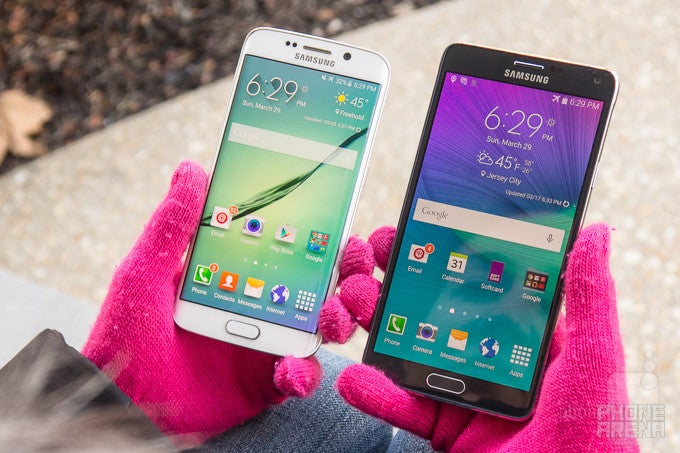
Introduction
Trying to predict the future is one of the many things people aren't very good at. Several decades ago, bright minds envisioned a 21st century dominated by glass dome cities, flying cars, jet packs, and, of course, self-lacing sneakers. What they probably didn't imagine us having are cell phones with curved screens (that weren't tiny CRT monitors). Yet here we are, holding one of the coolest smartphones ever made, and it is flaunting curves on both sides of its gorgeous display. The smartphone in question is the Samsung Galaxy S6 edge.
Now, we can't deny the fact that the Samsung Galaxy S6 edge is one of the coolest smartphones in the universe, but at the same time, it is our duty to compare it against every phone capable of giving it a run for its money. One such smartphone is the Samsung Galaxy Note 4, which is quite possibly Samsung's best smartphone for 2014. Let's dive straight into it and see how the two stack up.
Design
With its premium build and unique design, the Galaxy S6 is Samsung's most attractive smartphone to date. Period. The Samsung Galaxy Note 4, however, stands out with its sheer size.
While the Samsung Galaxy Note 4 draws attention with its size, the Galaxy S6 edge makes heads turn with its appearance. As a matter of fact, the latter is probably Samsung's most attractive smartphone to date, and the curved screen edges contribute greatly to the device's “wow” factor. So do the high-quality materials used in its construction. On the downside, the practical applications of the phone's dual-curved screen are limited, and the unusually thin side frame does make the phone somewhat uncomfortable to hold compared to the Galaxy S6 or even the Galaxy Note 4.
Speaking of the Galaxy Note 4, it is a no-nonsense smartphone with traditional, flat-screen design. It doesn't draw as much attention as the Galaxy S6 edge with its “okay” design, but it is definitely not a bad-looking phone either. Size-wise, it dwarfs the average-sized Galaxy S6 edge – a trait that has both its positives and negatives. On one hand, large smartphones like the Note 4 are ideal for a number of uses, including but not limited to surfing the web, watching videos, and playing games. On the other, many might find it uncomfortable to operate the Galaxy Note 4 single-handedly.
As we mentioned, the Galaxy S6 edge is made of top-notch materials only, unlike previous Galaxy S handsets. The phone is surrounded by a solid metal frame – one that won't bend under every-day pressure, Samsung promises. Moreover, the frame's beveled edge raises slightly above the display's surface, presumably to act as a bumper when the phone is lying flat or in case of an accidental drop. Speaking of accidental drops, the front and back sides of the phone are covered by Gorilla Glass 4, which is known for its resistance to physical damage. The surface is like a magnet for fingerprints, however, so keeping the phone in pristine condition takes frequent rubbing. Or you can simply buy a case.
The Galaxy S6 edge comes in four different colors – black, white, gold, and green. All variants feature a special optical layer on both sides which creates a unique and quite fashionable reflective effect. In contrast, the Galaxy Note 4 sticks to a more traditional look, with no shiny elements distracting the user from their business. It can be had in black, white, gold, or pink.
Like the case is with the Galaxy S6, the Samsung Galaxy Note 4's sides are reinforced by a sturdy metal frame. Its back side, however, is made of plastic, textured to emulate the look of leather. The material isn't as fancy as the S6 edge's glass surface, we have to admit, but it doesn't look or feel bad either. It provides sufficient grip, it is immune to fingerprints, and it should prove durable over time.
Now seems to be a good time to mention that the back of the Samsung Galaxy S6 edge is tightly sealed. In other words, the glass plate will be hard to replace if damaged, and the user does not have access to the phone's battery should they ever need to replace it. The Galaxy Note 4, on the other hand, sports a removable back, behind which resides a user-replaceable battery.
Both the Galaxy S6 edge and the Galaxy Note 4 stick to Samsung's traditional button layout, with power and volume buttons on their right and left sides respectively, where they're easy to reach. These keys are made of metal and respond with an excellent click when pressed. We do have to commend Samsung for fitting the power key on the frame's side, where it's easy to reach, instead of placing it at the phone's top side. Under both phones' displays we find a physical “home” button, accompanied by capacitive keys for the “back” function and for listing recent applications.
Speaking of buttons, both smartphones have a fingerprint scanner embedded in their home button. It serves as an alternative to a traditional lock screen PIN or pattern, but can also be used for logging onto websites, for authorizing PayPal payments, and to replace a Samsung account's username and password. There's a huge difference between the two phones' fingerprint scanners, however. On the Galaxy S6 edge, you simply touch the scanner to have your fingerprint read, while the Galaxy Note 4 requires you to swipe down on the scanner. The latter solution works, but it is unreliable compared to the S6 edge's touch-based scanner.
As other members of Samsung's Note series and unlike the Samsung Galaxy S6 edge, the Galaxy Note 4 is equipped with an S Pen – a digital stylus made primarily for note-taking and drawing. It's a standout feature, there's no denying that, but not one the majority of Note 4 owners would use on a daily basis.
Display
With their high pixel density and accurate colors, both phones' screens are a pleasure to look at. The Galaxy Note 4, however, excels in the color fidelity category.
As it's clear to see, the Samsung Galaxy Note 4 stands out with its larger display, also protected by a layer of Gorilla Glass 4. It measures 5.7 inches in diagonal and dwarfs the screens of most other smartphones currently on the market. Anyone who spends a lot of time surfing the web, watching videos, or playing games on their handset will appreciate having such a spacious screen at their disposal despite the inconvenience of reduced single-handed usage. At 5.1 inches in diagonal, the display on the Galaxy S6 edge is not tiny either, although we do feel like its curved sides might prove a bit impractical in certain use cases – while watching full-screen videos or playing games, for example. Not a biggie, but it should be mentioned.
Size and shape aside, there's a number of traits the screens on the Galaxy Note 4 and Galaxy S6 edge have in common. First and foremost, they're both packing the same number of pixels – 1440 by 2560 of them – which results in sharp and pixelation-free visuals, as we'd expect out of a high-end handset. As a matter of fact, the 577 pixels per inch produced by the Galaxy S6 edge's display is an industry-leading figure. The Note 4 is somewhat behind with its 515 PPI, but in all honesty, our eyes can't really detect much of a difference in the level of details produced by both screens. High-res graphics look equally stunning on both handsets.
The two phones' panels are of the Super AMOLED variety, which explains the wide viewing angles, the contrasty images, and the saturated colors they produce. And speaking of colors, both phones let you tinker with their screens' settings. One may choose between several different display modes, depending on the kind of color reproduction they prefer. Adaptive Display mode, enabled by default, automatically adjusts the color range, sharpness, and saturation of the display depending on what's being shown on the screen. It throws color fidelity out the window, however – colors are vivid and saturated, but not exactly accurate. Alternatively, there's the so-called Basic mode, which is present on both phones and designed to deliver utmost color precision. With this mode enabled, we ran our usual set of screen benchmarks to test how accurate the two screens could actually get.
Long story short, the display on the Samsung Galaxy S6 edge is among the most accurate AMOLED screens we've ever tested, although not quite as precise as the Note 4 when it comes to color reproduction. We measured a color temperature of around 6800K while benchmarking the S6 edge's display, which is great, but the Note 4, with its 6670K color temperature is a bit more precise. The Note 4's superior color fidelity is especially evident in our saturation sweep benchmarks. In the Note 4's case, the reproduced color values are very close to their reference values, while some irregularities are indeed observed in the Galaxy S6 edge's benchmarks. Nevertheless, we're pretty sure that to the average user, both displays would look equally awesome.
We can't complain about the outdoor visibility of either phone's screen. The Samsung Galaxy Note 4 produces over 450 nits of brightness, all while reflecting a minimum amount of sunlight at the user's eyes, which allows the phone to be used comfortably on a sunny day. Same goes for the Samsung Galaxy S6 edge, which outputs over 550 nits of brightness – an impressive figure for an AMOLED display. In addition, the excellent minimum brightness of both screens, hovering around 1 to 2 nits, allows them to be looked at comfortably at night.
Interface and functionality
The Samsung Galaxy S6 edge packs a lot of tricks up its sleeve – tricks the Note 4 will learn, we hope.
TouchWiz – Samsung's custom user interface – has evolved quite a bit over the years, and on the Galaxy S6 edge, it comes in its latest, most refined form ever. Gone is the gimmicky and laggy Android layer we once knew. Powered by Android 5.0 Lollipop, TouchWiz on the Galaxy S6 edge is simple and functional, focused on features that make sense, all while leaving the gimmicks in the options menu, just in case you feel like scrolling down a web page by tilting the handset.
The Samsung Galaxy Note 4, which has already been treated to its Android 5.0 update, seems to be running a TouchWiz version that's similar to what we see on the S6 edge. It's missing quite a few bits found on the newer TouchWiz release, however, and we're not talking only about the performance improvements it brings along.
For example, one cool perk you'll find on the Galaxy S6 edge is its native support for themes. These let you give an entirely new look to the phone's interface – you may make it cute and colorful or professional and minimalist, whatever your heart desires. Themes can be downloaded for free from Samsung's catalog.
Another standout feature exclusive to the Galaxy S6 edge (and its flatter counterpart, the Galaxy S6) is the new Samsung Pay mobile payment system. Once launched, the service will let you use the Galaxy S6 edge instead of a Master Card of Visa card at major retailers. At this time, we can't promise that Apple Pay is coming to the Note 4 anytime soon.
On the Galaxy Note 4, a double press of the home button enables S Voice, which is Samsung's alternative to Siri. In TouchWiz on the Galaxy S6 edge, however, Samsung has assigned a new, much more useful shortcut to the phone's home button – a double press takes you to the phone's camera in no time, even when the phone is locked.
In addition, we have to highlight the set of features that take advantage of the Galaxy S6 edge's curved display. One of them is the option to view notifications, news, stock prices and more when the phone is in stand-by – that is done with a simple swipe of the curve which enables this info ticker without turning on the entire screen. Besides that, the dual-curved edges provide us with instant access to People Edge – a small ribbon that offers us access to up to five favorite contacts. From the lock screen, the convenience factor is there because it's accessible at a moment's notice. However, if you opt to have a security lock of some kind, the feature might not be available – that's unless you enable the lock screen to show all notifications. Furthermore, something pretty cool happens when one of your favorite contacts gives yo a call. If your S6 edge is laying flat with its screen down, the edge will be illuminated in the respective contact's color, thus acting as a notification light by illuminating the underlying surface. The effect is subtle, but it is there.
The Galaxy Note 4's S Pen is something you won't find on the Galaxy S6 edge, As we mentioned earlier, it is a digital stylus made for taking hand-written notes and drawing, but it can be used for UI navigation, text input, or cropping areas of the screen and saving them as notes. It's a cool perk, and we'd not complain about having it, but it isn't something many would be using on a daily basis.
On both the Samsung Galaxy S6 edge and Galaxy Note 4 we have Samsung's health and fitness monitoring tool known as S Health. The former ships with a newer version of the app, however. The most striking difference is that the new S Health has been significantly simplified. Its UI gives you all your essential data at a glance, and getting to handy features like the pedometer, the heart rate monitor, or the UV light sensor, is more intuitive than before. Speaking of which, both phones have their heart rate and UV light sensors placed on the back, next to the camera lens. One inconvenience remains, however. In order to measure your pulse, you're required to pause your exercise routine and stand still while the phones' sensor does the measurements.
The on-screen keyboard is one of the UI elements that hasn't really changed with the Galaxy S6 edge's introduction. Practically, it is identical to the one on the Galaxy Note 4, which actually isn't a bad thing. It is spacious, accurate, and the extra row of numbers at the top comes in handy often. Both keyboards support the swipe input method, which is disabled by default. Typing with two thumbs is more comfortable on the Note 4 as its screen is wider, but the Galaxy S6 edge is more than adequate for the purpose as well.
Processor and memory
The two performance powerhouses handle anything with ease, although the Galaxy S6 edge is undoubtedly more future-proof.
Hardware-wise, saying that the Samsung Galaxy S6 edge is powerful would be an understatement. With the new 64-bit Exynos 7420 SoC ticking inside of it, Samsung's flagship is the new Android smartphone to beat, judging by the tests and comparisons we've performed between it and other Androids. At the same time, the chip's industry-leading 14nm manufacturing process ensures low power consumption and efficiency. Data crunching is performed by an octa-core CPU configuration featuring four high-performance 2.1GHz Cortex-A57 cores and four energy-saving Cortex-A53 cores running at up to 1.5GHz. Graphics are handled by a Mali-T760 MP8 GPU with a 772MHz top clock speed.
With its quad-core, 32-bit Snapdragon 805 SoC, the Samsung Galaxy Note 4 is no slouch either, although it scores lower on synthetic benchmarks compared to the S6 edge's Exyons chip. This is valid for both single- and multi-core benchmarks, as well as for GPU-intensive tasks. Specs-wise, the silicon features a quad-core Krait 450 CPU cluster with a 2.7GHz top clock speed and an Adreno 420 GPU running at up to 600MHz. Furthermore, the Snapdragon 805 is built on the older and less power efficiend 28nm manufacturing process. We must note that a Galaxy Note 4 model with an Exynos 5433 SoC is also available in select markets, yet its performance is comparable to that of a Snapdragon-powered Note 4.
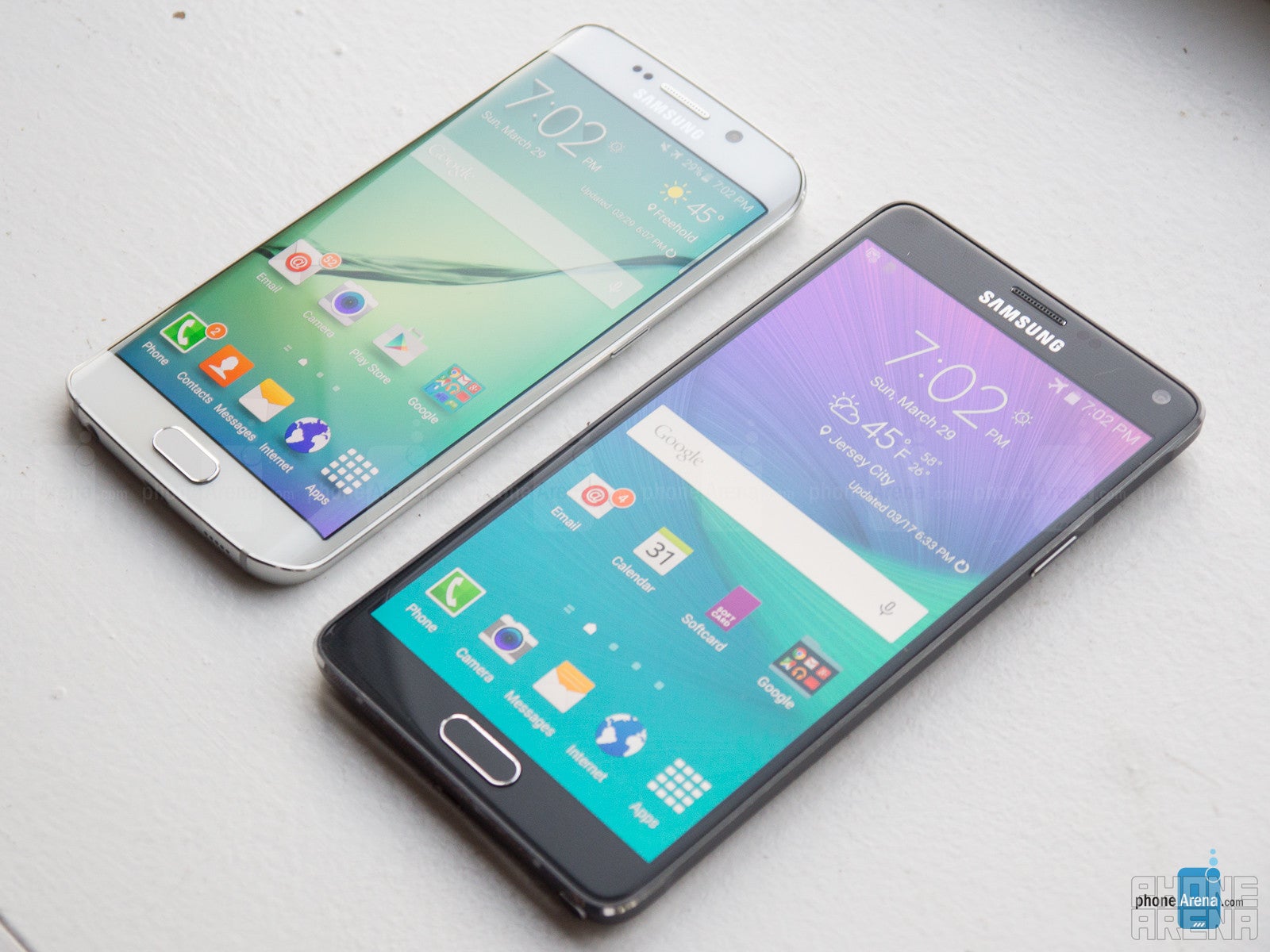
We must point out that both smartphones pack 3GB of RAM, which is plentiful by today's standards. However, the Samsung Galaxy S6 edge relies on DDR4 technology, while the Note 4 has a DDR3 RAM chip. In plain words, DDR4 is both faster and more energy-efficient than its predecessor, which is a welcome improvement.
Some will surely be disappointed to know that the Samsung Galaxy S6 edge does not offer a microSD card slot for storage expansion, unlike the Galaxy Note 4 and every other Galaxy S flagship before it. What the phone does, offer, on the other hand, is dramatically increased read/write performance of its built-in storage thanks to UFS 2.0 technology. Compared to the Note 4, the Galaxy S6 edge is two times faster at reading data from its on-board storage, and four times faster at writing it. And faster storage speeds translate to better real-world performance in a number of cases.
To compensate for the lack of expandable storage, Samsung will be offering the Galaxy S6 edge with up to 128GB of storage, although you may choose to stick with 64 of 32 gigabytes of the stuff and save a few bucks along the way. The Galaxy Note 4, which comes with 32GB built-in as standard, will accept microSD cards of up to 128GB in size and probably beyond.
Internet and connectivity
Flawless performance, no complaints here. With its large display, however, the Note 4 is definitely better prepared for web surfing.
There are two web browsers pre-loaded on both the Samsung Galaxy S6 edge and the Galaxy Note 4. One of them is Samsung's own solution, labeled simply as Internet. Multiple tabs, incognito mode, and other essential browser features are on board, along with a navigation strip on the bottom which you may or may not like. Bookmarks are synchronized with your Samsung account, in case you happen to have one. The browser also has this cool feature called Reader mode, which strips a web page of all unnecessary content, leaving only the body of an article for easy reading.
Alternatively, you may use Google's Chrome, which is no less powerful of a browser. It lets you access tabs you have opened on other devices, and the app's built-in data compression feature may save you a significant amount of data when browsing on a 3G/4G connection. Moreover, your browsing data, bookmarks, and history are saved in your Google account, which you're more likely to have.
Whichever of these two browser you pick, chances are you won't be disappointed by their performance. Both run without any issues on the Galaxy S6 edge and on the Galaxy Note 4. Yet the latter phone is more convenient for web browsing, of course, thanks to its larger display.
Camera
While the Galaxy S6 is a step ahead on paper, the performance of both phones' cameras is comparable. Although the Note 4 might use a UI redesign.
Firstly, let's look at the raw figures. The Samsung Galaxy S6 edge and Galaxy Note 4 both use Sony's IMX240 1/2.6" sensor with 16MP of resolution and 16:9 aspect ratio, backed by a single LED flash. In addition, both cameras feature optical image stabilization for smoother videos and steadier low-light shots. But identical the two cameras aren't. With the Galaxy S6 edge, you get a wider aperture of F/1.9 versus the F/2.2 on the Note 4, which is why the S6 edge is expected to have the upper hand when it comes to low-light performance. Its wider aperture will be letting more light into the camera, thus likely producing better stills. Another differentiating factor is the two cameras' focal lengths. Thanks to its focal length of 28mm, the Galaxy S6 edge camera has a wider field of view compared to the Note 4's with its 31mm focal length. We must also mention the new infrared white balance featured on the S6 edge, meant to help with adjusting the white balance more accurately, depending on the lighting conditions.
As we mentioned earlier, the camera on the Samsung Galaxy S6 edge can be launched with a simple double press on its home button. And the launch is almost instantaneous – the process takes under a second as the camera app is always on stand-by. In comparison, the camera on the Note 4 takes slightly longer to open as you have to wake the phone's screen and then trigger the shortcut placed on the lock screen.
Once in the camera menu of the Samsung Galaxy S6 edge, we're greeted by a friendly and familiar interface. In fact, the UI doesn't differ much from the interface on the Galaxy Note 4, which is not a bad thing. The layout is simple, with almost nothing in the viewfinder's way. As before, there's a dedicated button for shooting video – you don't have to switch to a separate menu if you need to shoot a clip, which is convenient. Controls for the flash and for enabling the live HDR mode are placed on the left, where they're easy to reach.
After digging deeper into the phones' camera UIs, however, we came across quite a few notable differences. One of them is the overhaul of the advanced settings screen. On the Galaxy S6 edge, these are placed in a dedicated Pro mode, which, when enabled, lets you control the ISO, white balance, and the exposure compensation value, among other settings. What's more, these are adjusted with a simple slider at the side of the UI, with nothing getting in your way. In contrast, manual controls on the Note 4 are executed poorly. They are found in a menu within the camera's Auto mode and aren't convenient to adjust. That's because you can't see much of the change you've made as most of the viewfinder is occupied by the manual controls menu. This makes no sense, we hope you'll agree.
One ace up the S6 edge's sleeve is its tracking autofocus feature. It does exactly what its name implies, and it works pretty well in good light conditions – focus is locked on a moving object, which can come in handy when taking action shots. Furthermore, the Galaxy S6 edge gives you true manual control over the focus, while the Note 4's focus can be adjusted manually only if you tap on an object.
As far as image quality goes, the Samsung Galaxy S6 edge and Galaxy Note 4 are both excellent performers, and despite a few minor differences in the way they capture images, we can't rank one better than the other. Given enough light, both produce outstanding images with plenty of details and eye-pleasing colors. However, the Galaxy S6 edge produces images with softer detail compared to the Note 4, presumably due to its camera's wider aperture, the way its software processes the image, or a combination of both factors. These images are not bad by any means. They're just different in appearance when you crop one or take a very close look. The Note 4's photos are sharper, but noise is a bit more noticeable. That's partially because the camera has to set a higher ISO to compensate for its narrower aperture, we presume. But all in all, we're more than pleased with both cameras' daytime performance.
In low light conditions – thing while shooting indoors or at night – the two cameras deliver pleasing results of similar quality. Details are preserved well, and while noise is present, it is kept well under control. When the flash is used from a reasonable distance to the subject, it does a pretty good job at filling the frame with light without distorting the white balance.
Similarly, the Samsung Galaxy S6 edge and Galaxy Note 4 produce outstanding videos. Both can shoot 1080p flicks at a steady 30 or a fluid 60 frames per second, or 4K videos at 30 frames per second. What's more, videos are accompanied by loud and clear stereo sound. What makes the S6 edge stand out is its continuous autofocus. On the Note 4 it works well, but on the S6 edge it is noticeably faster.
We're happy to see that Samsung has not overlooked the front-facing shooter on its flagship phone. The Galaxy S6 edge features a 5-megapixel frontal camera with a wide, F/1.9 aperture for improved low-light performance. What's more, the camera supports live HDR for better images in tricky light. But the front-facing camera on the Galaxy Note 4 should not be underestimated. It features 3.7MP of resolution, wide-angle optics, and produces pleasing images, as we know from experience. We should mention that both selfie cameras can produce selfie panoramas by stitching a sequence of images together.
Multimedia
No doubts about it – to enjoy the best multimedia experience, the Galaxy Note 4 is the phone to go with.
The Gallery application part of Samsung's new TouchWiz interface hasn't really changed much. On both the Galaxy S6 edge and Galaxy Note 4, the app presents us with an overview of our folders where images are present, and once we open an image, we're allowed to edit it to our liking. In the Note 4's case, the S Pen comes in handy if you want to add hand-written text to your images.
Similarly, the TouchWiz Music player on the Galaxy S6 edge has been left mostly unchanged in terms of functionality. What's different, however, is that its interface and audio adjustments screen have been simplified significantly compared to what we see on the Galaxy Note 4.
If you feel like watching a video, neither of the two phones should have troubles playing one at up to 4K resolution. With its larger and flat display, however, the Galaxy Note 4 is the smartphone for watching flicks.
Samsung has equipped the Galaxy S6 edge with a single loudspeaker. Its output of 75.4 decibels is decent, yet average at best compared to other flagships. The Note 4, for example, outputs a whopping 85 decibels. On the downside, the Note 4's speaker is placed at the back, and when you're watching videos, for example, the sound is projected away from the user, which reduces the perceived volume. The S6 edge has its speaker placed at the bottom side, which would be somewhat better of a solution in a similar scenario.
Call Quality
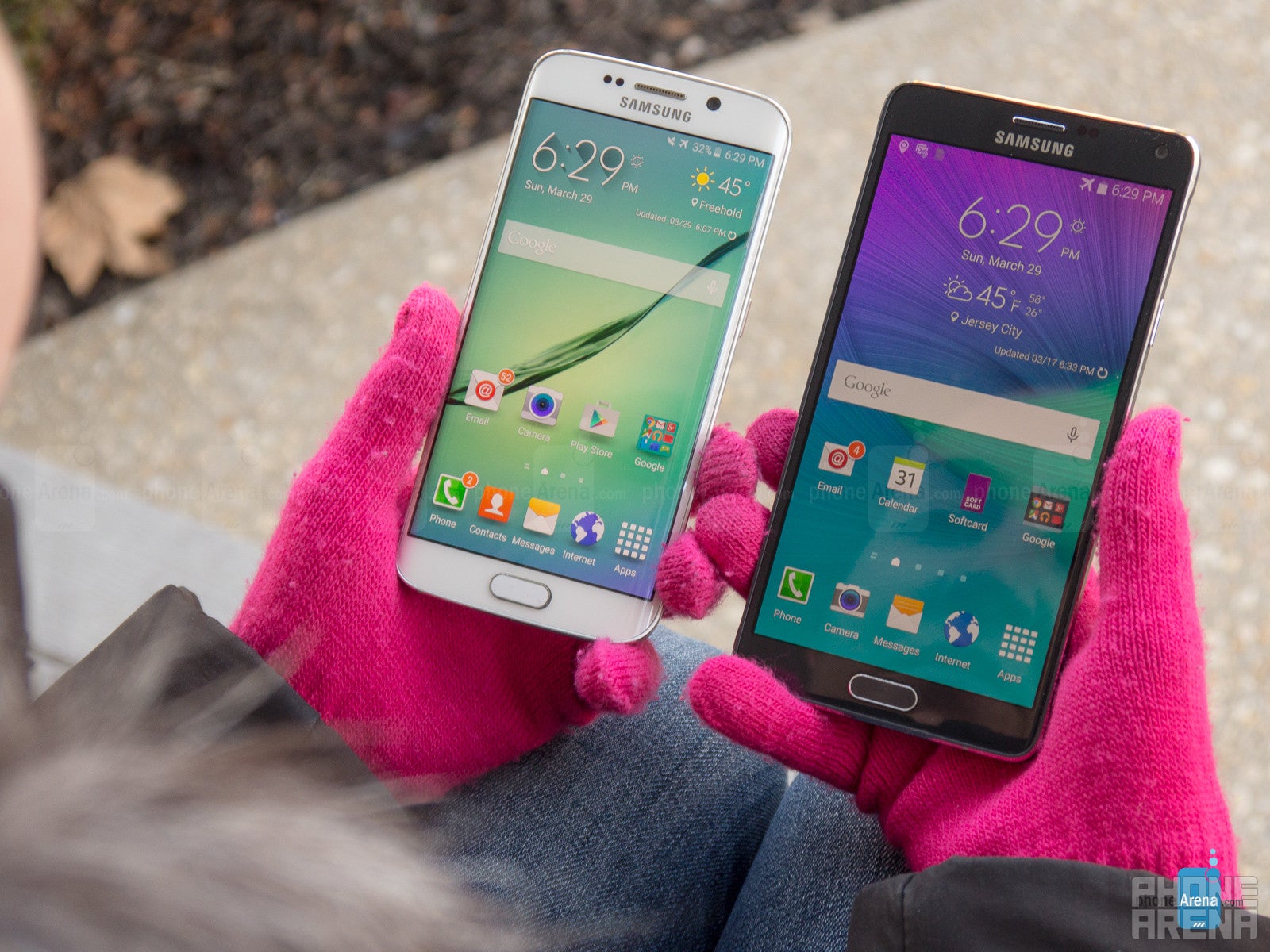
Battery
First, here are the raw figures you need to know – inside the Galaxy S6 edge we have a 2,600mAh battery, which is significantly smaller than the 3220mAh juicer inside the Galaxy Note 4. But as we mentioned previously, the Galaxy S6 edge packs more power-efficient hardware. Would this make a difference? Well, we suppose it does, yet it's not enough to outrun the Note 4. The Galaxy S6 lasted through 8 hours and 11 minutes of our battery benchmark routine, while the Note 4 clocks in at 8 hours and 43 minutes, lasting over 30 minutes longer.
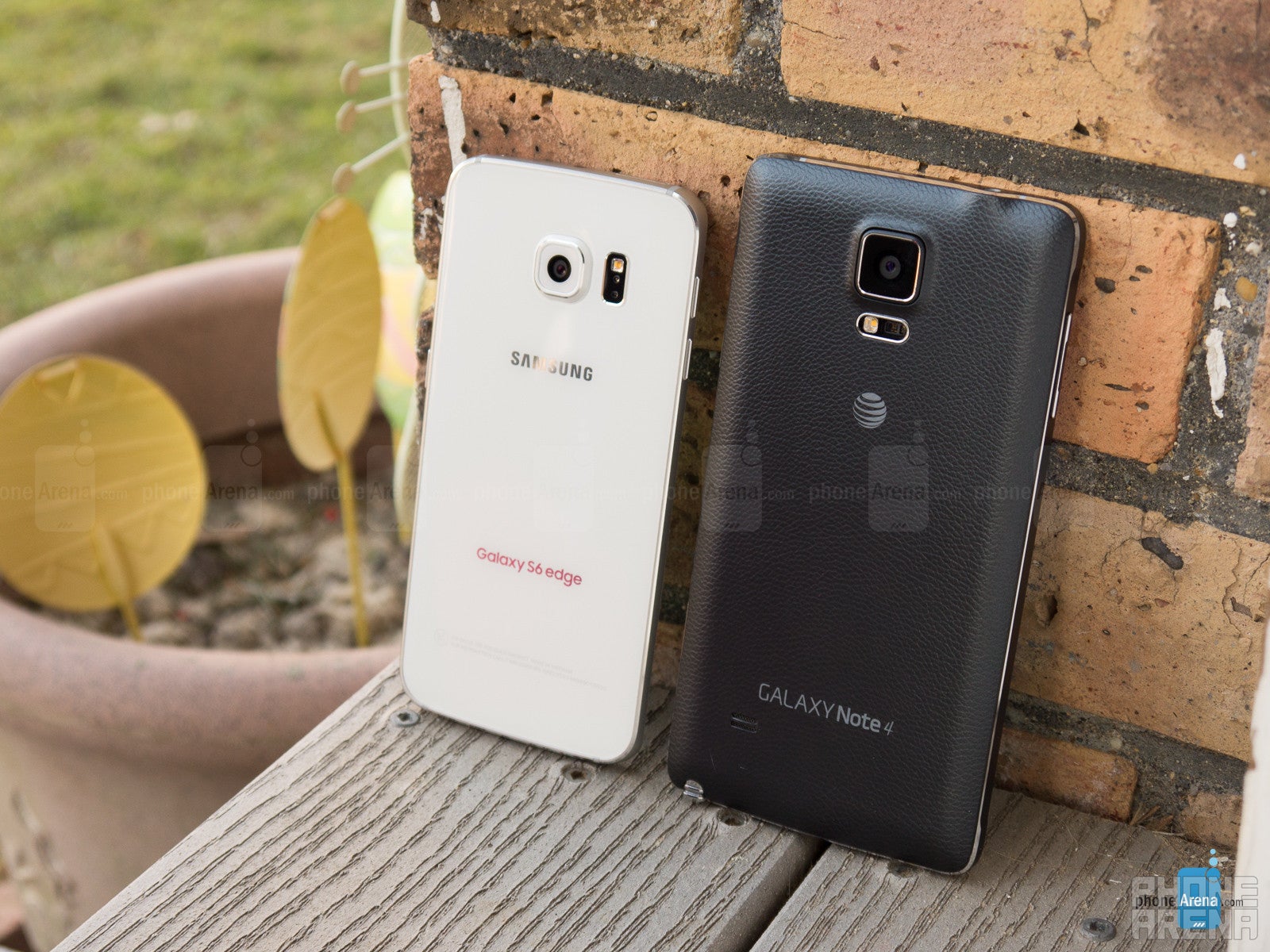
Wireless charging is a cool perk you don't see on any phone. The Galaxy S6 edge supports the two major wireless charging standards, while the Note 4 requires a special back cover, sold separately, to get along with Qi charging pads.
Conclusion
If you feel like the Samsung Galaxy S6 edge is the right phone for you, just get it. And if your inner voice is telling you to pick the Galaxy Note 4 instead, just get it. Both devices rank among the best Androids money can buy and likely won't disappoint you with what they bring to the table.
Yet we must admit that the Galaxy S6 edge is better than the Note 4 in many ways, and we're not talking only about the outstanding design and build quality it draws so much attention with. Samsung's curvy flagship phone shines with its blazing hardware performance and with the responsiveness of its software, which is enough for us to recommend it over “older” Samsung handsets. Not that the Galaxy Note 4 is a slow phone – its Snapdragon 805 can handle anything thrown at it – but the Galaxy S6 edge is more refined of a smartphone with its superior hardware configuration, and that's a plus.
On the other hand, we must admit that the large and beautiful display on the Galaxy Note 4 is a valuable asset, and we have a feeling that users who need a phone for heavy multimedia use would rather go with that over the gorgeous but smaller and curved screen on the Galaxy S6 edge. Also, the Galaxy Note 4 managed to outrun the S6 edge in our battery endurance test, which is why the phablet should be picked by those who prioritize battery life. And if that's not enough, the Galaxy Note 4 provides you with the convenience of expandable storage, while the Galaxy S6 edge relies solely on whatever it has built in. And higher-capacity S6 edge units cost a pretty penny.
As far as camera performance goes, we didn't notice any significant differences in the way the phones' snappers perform. Both produce great images even in tricky conditions, and the same can be said for the excellent 1080p and 4K videos the two capture. If you're a hardcore camera buff, however, you might like the Galaxy S6 edge's camera interface better as it is better exectuted and packed with more handy manual controls.
And lastly, we must point out that the Galaxy S6 edge is the more expensive smartphone among the two, costing $300 on a 2-year contract, while the Note 4 can be found for $100 less. But if your goal is to have a smartphone that puts power and style over one roof, spending the extra Benjamin on an S6 edge would be worth it.

Samsung Galaxy S6 edge
Pros
- More premium build
- Lighter, thinner, and more compact
- Much more reliable fingerprint scanner
- Newer, more responsive TouchWiz version
- Faster processor, RAM and storage
Samsung Galaxy Note 4
Pros
- Larger screen
- Bigger, longer-lasting, user-replaceable battery
- MicroSD card slot makes storage expansion easy
- Bundled with S Pen stylus and Wacom digitizer
- Fingerprint-free back cover
Follow us on Google News
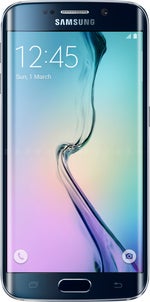
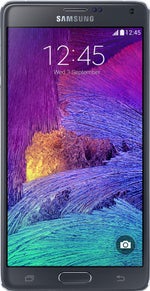

























Things that are NOT allowed:
To help keep our community safe and free from spam, we apply temporary limits to newly created accounts: